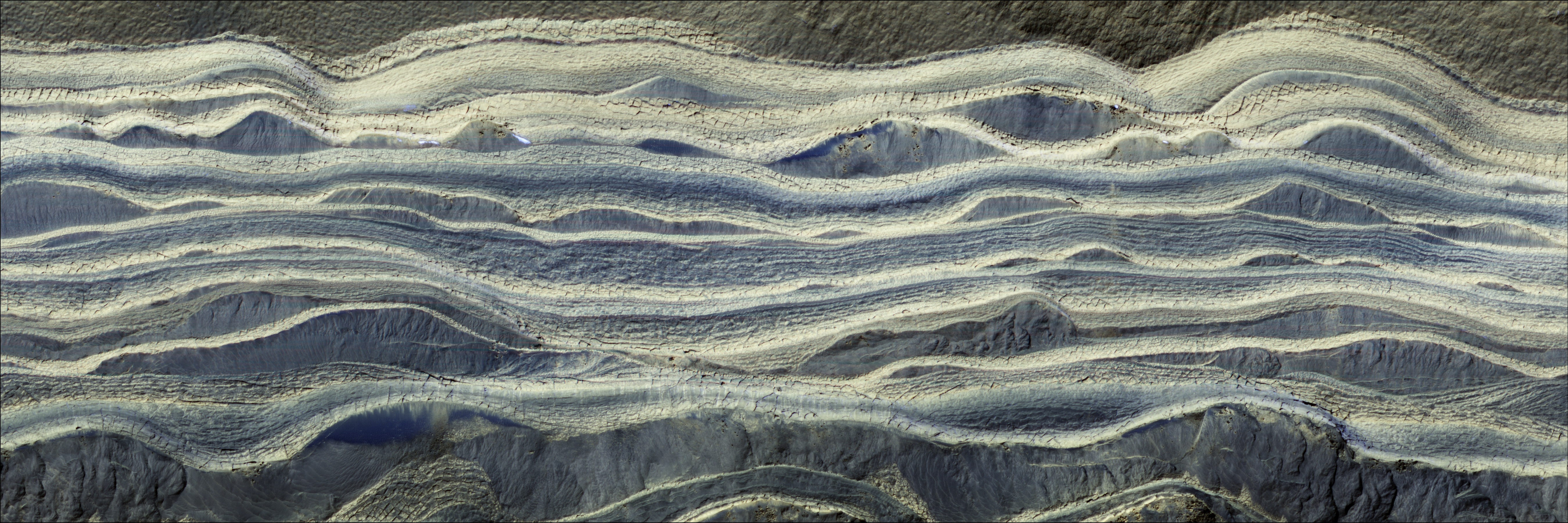
Mars' polar caps: an Amazonian record of climate and surface processes
Since the first orbital images captured by Mariner 9 and Viking, scientists realized that strata contained within the polar caps of Mars are a record of past climate and polar processes. The units contained within Mars' polar caps are Amazonian in age, meaning that they formed within the last 3 billion years.
TAPIR studies many aspects of the sedimentary deposits at Mars's poles, with a focus on their stratigraphic architecture and composition. We employ a variety of orbital instrument data and techniques, such as sounding radar profiles, high resolution images, and laser altimetry.
The initial emplacement of the North Polar Layered Deposits

The 2 km thick north polar layered deposits (NPLD) are often considered to contain the most complete and detailed stratigraphic records of recent climate of Mars. Exposures of the dense layering within troughs and scarps allowed detailed reconstructions of the latest accumulation history of these water ice deposits, but we lack knowledge of their initial emplacement. The Shallow Radar (SHARAD) onboard Mars Reconnaissance Orbiter (MRO) penetrates the NPLD to their base and detects their internal layering, overcoming the limitation of scarce and scattered visible outcrops of the lowermost sequences. Detailed analysis of each radar reflector showed that significant thickness variations are present in several places within the lowermost NPLD. We also found evidence of an initially limited geographic stability of water ice within two deposits, which form two small lobes around the north pole and in proto-Gemina Lingula. Overall, these findings inform us on of a previously unknown complexity in the initial NPLD evolution, which is likely tied to global climate change and modulated by local surface processes.
Buried ice and sand caps within cavi unit

The cavi unit at the north pole of Mars is a deposit of aeolian sand and water ice underlying the Late Amazonian NPLD. Its aeolian cross strata of Middle to Late Amazonian age record wind patterns and past climate. The Mars Reconnaissance Orbiter Shallow Radar (SHARAD) reveals extensive internal and basal layering within the cavi unit, which allowed us to determine its general structure and composition. Assuming a basalt composition for the sand, we found that cavi unit contains between 62% and 88% water ice by volume, and thus represents one of the largest water reservoirs on the planet, possibly the third after the two PLDs. Internal reflectors indicate vertical variability in composition, likely in the form of alternating ice and sand layers. The ice layers may be remnants of former polar caps and thus represent a unique record of climate cycles predating the north polar layered deposits.

